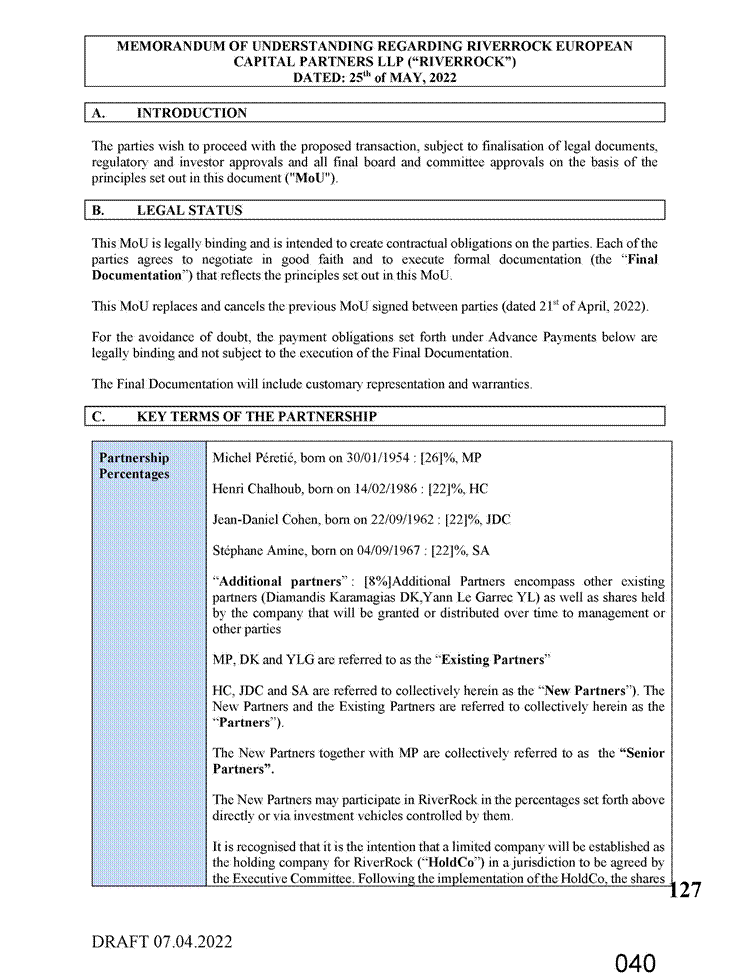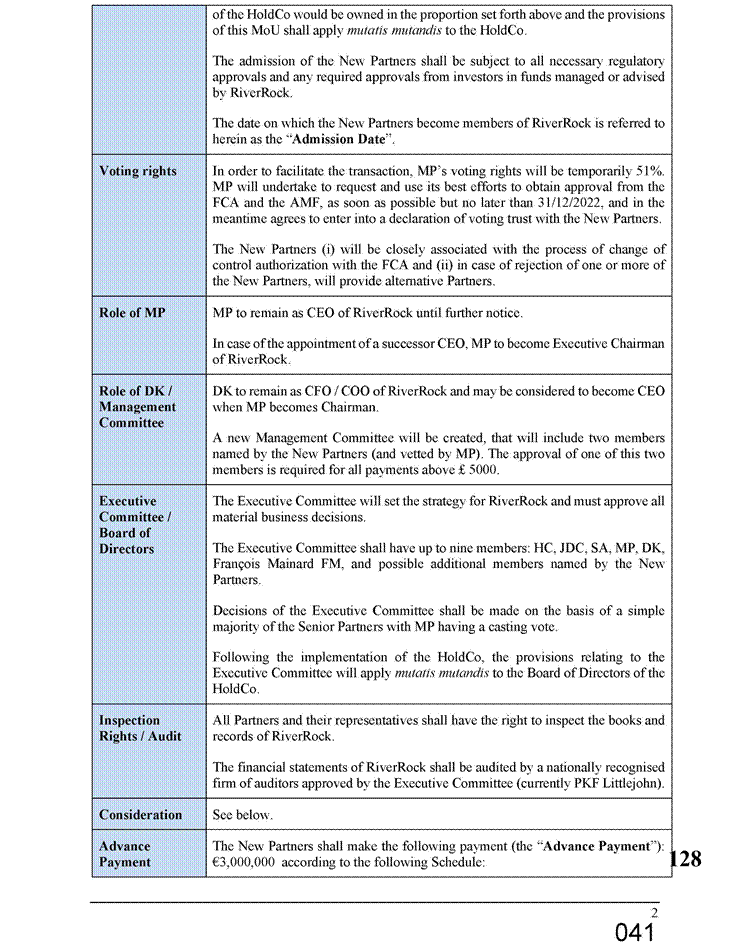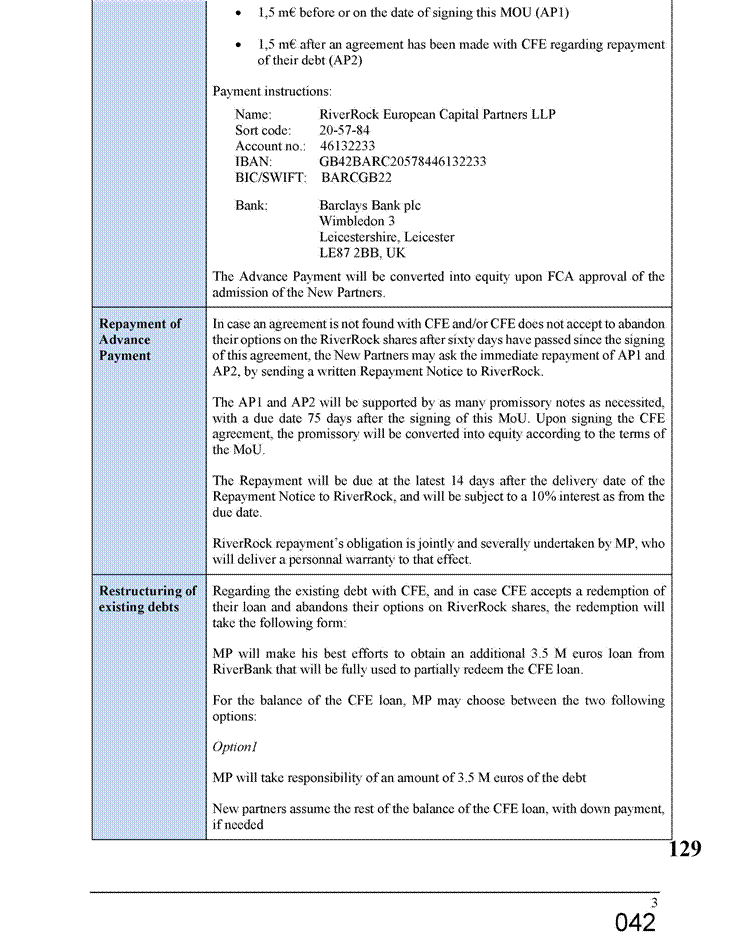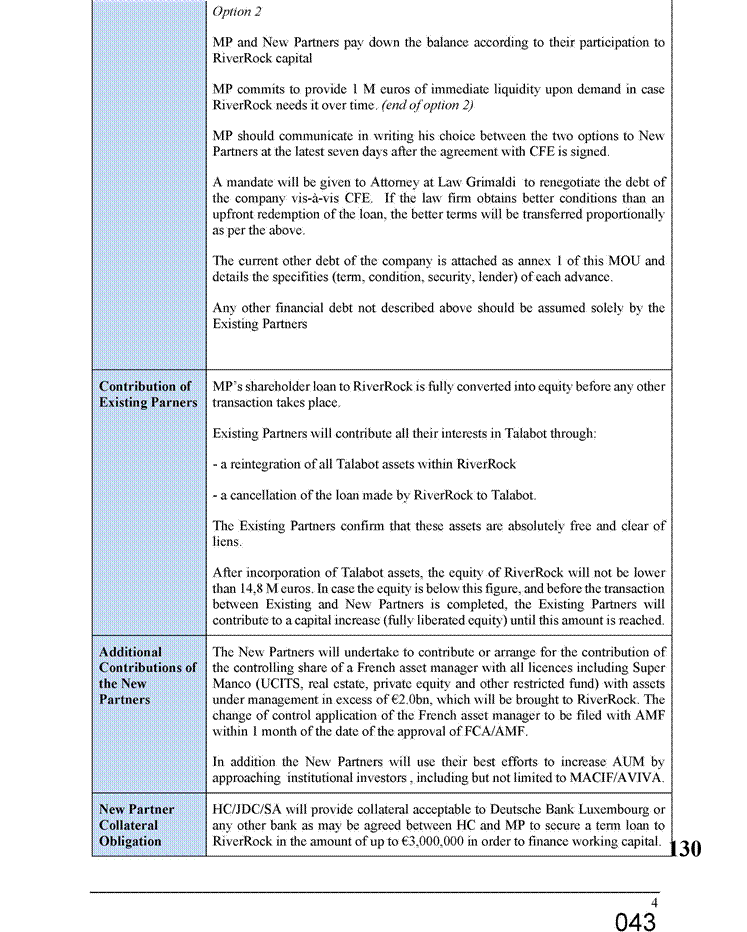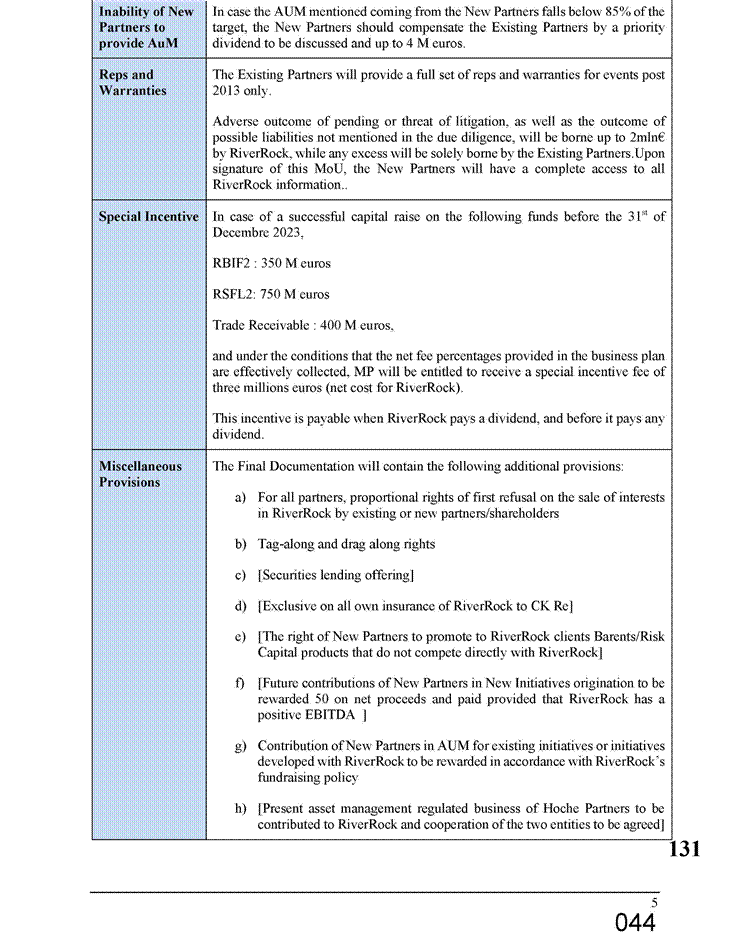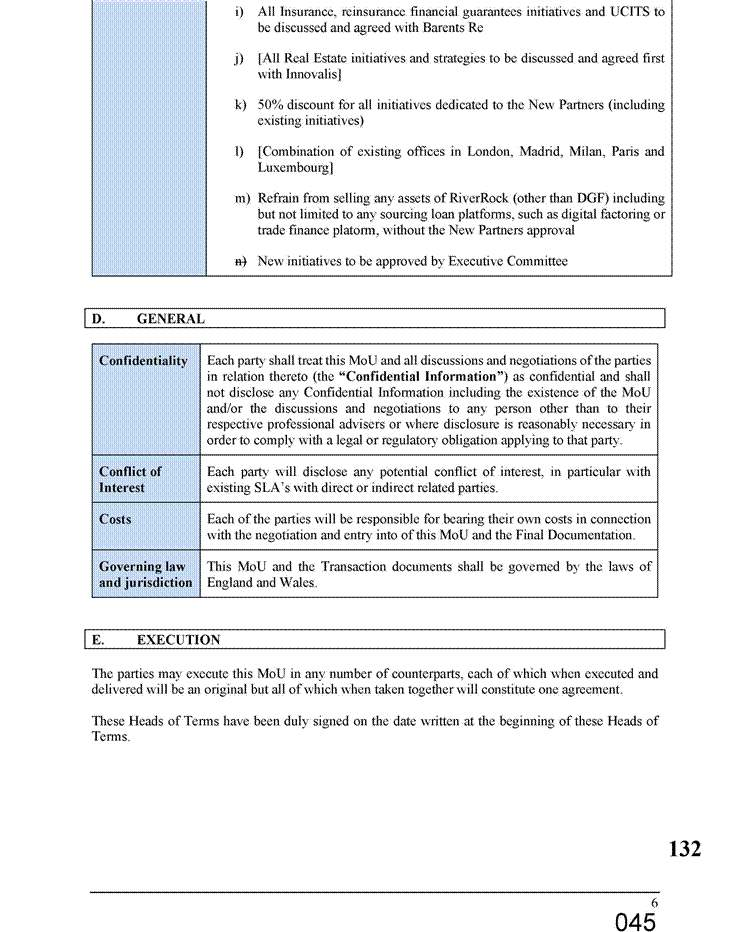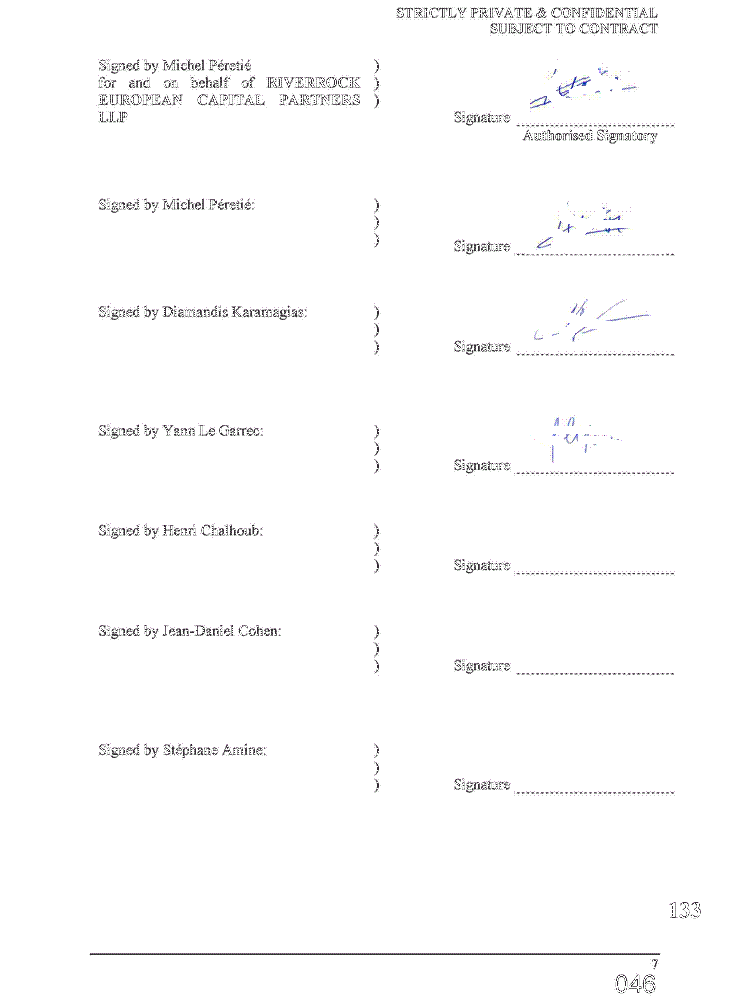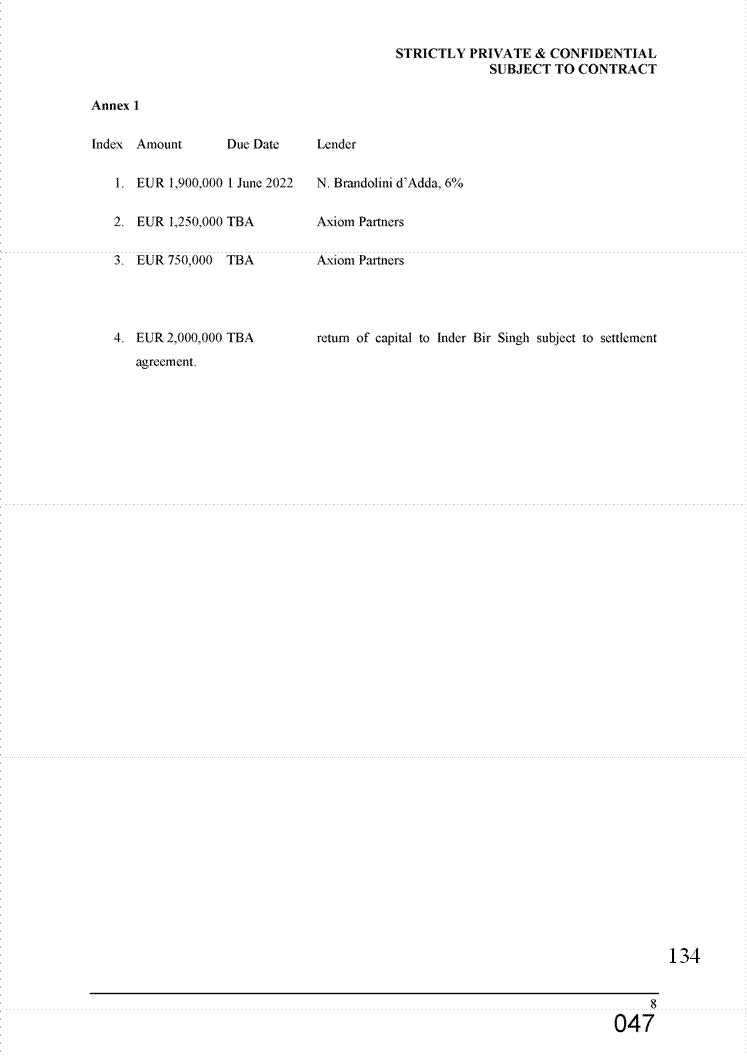Neutral Citation Number: [2025] EWHC 845 (Comm)
Case No: CL-2024-000171
IN THE HIGH COURT OF JUSTICE
BUSINESS AND PROPERTY COURTS OF ENGLAND AND WALES
KING'S BENCH DIVISION
COMMERCIAL COURT
Royal Courts of Justice, Rolls Building
Fetter Lane, London, EC4A 1NL
Date: 4 April 2025
Before :
Mr Stephen Houseman KC
(Sitting as a Deputy Judge of the High Court)
- - - - - - - - - - - - - - - - - - - - -
Between :
|
|
(1) Jean-Daniel Cohen
(2) Stéphane Amine
(3) Henri Chalhoub |
Claimants |
|
|
- and - |
|
|
|
(1) RiverRock European Capital Partners LLP
(2) Michel Péretié |
Defendants |
- - - - - - - - - - - - - - - - - - - - -
- - - - - - - - - - - - - - - - - - - - -
Jonathan Cohen KC & Daniel Khoo (instructed by Browne Jacobson) for the Claimants
Richard Samuel & James Gale (instructed by Bonelli Erede Lombardi Pappalardo LLP) for the Defendants
Hearing date: 4 April 2025
- - - - - - - - - - - - - - - - - - - - -
Approved Judgment
Mr Stephen Houseman KC Friday, 4 April 2025
(11.00 a.m.)
Judgment by THE DEPUTY JUDGE
- By an application notice dated 8 November 2024 the claimants seek to strike out the Amended Defence or enter summary judgment on their claim pleaded in debt. That debt claim is for the sum of €3 million plus contractual interest at 10 per cent per annum.
- The basis of the claim is a document entitled "MEMORANDUM OF UNDERSTANDING REGARDING RIVERROCK EUROPEAN CAPITAL PARTNERS LLP" dated 25 May 2022. This document runs to six pages of printed text under five headings (A to E) arranged in demarcated blocks or boxes, plus an annex and two separate pages of scanned signatures. I refer to it as the "MOU". A copy is attached to this judgment.
- By Section D of the MOU, the parties expressly chose English law to govern such agreement and the financing/equity investment transaction it provided for in the future. English law therefore governs the question of whether the MOU created legally binding rights and obligations as well as their content, meaning and effect.
- The purpose of the MOU was to facilitate an immediate cash injection into D1 at a time when it was significantly indebted to an entity I will refer to as "CFE". In broad terms, CFE held an option to convert some or all of such debt into equity in D1. D1 was negotiating with CFE over the fate of that indebtedness and equity option.
- The parties to the MOU, according to its own terms, are: C1(JDC), C2(SA), C3(HC), D1(RiverRock) and D2(MP). They all signed it on or within a week of 25 May 2022, albeit C3's agreement was given by a signature of his father with, it is said, his son's authority.
- Pursuant to the MOU a total of €3 million was paid to D1 in five instalments between around 26 April and around 18 July 2022. This money was paid by two companies associated with two of the three claimants - namely, and for ease of reference, H (on behalf of C1) and B (on behalf of C3).
- The MOU contemplated that further, fuller and final documentation would be agreed and executed by the contracting parties in respect of the contemplated transaction. This never happened. A promissory note was drafted and signed by D1 in favour of H for the sum of €500,000 repayable by 10 August 2022. It provided for Luxembourg law. It was not signed by H and so remained unexecuted. I refer to it as the "Draft PN".
- The negotiations with CFE did not bear fruit in time. C1 to C3 accordingly demanded repayment of the principal sum.
- D1 and D2 deny liability to repay any of it. They contend as follows:
a. First, the repayment terms in the MOU are not legally binding, either because there was no intention to make them so or because they are too uncertain or materially inchoate or contingent in the sense of being 'subject to contract' in the classic sense. The defendants say this whilst accepting and averring that the logically prior payment terms are legally binding.
b. Second, any such repayment obligation as may have been imposed by the MOU was one in favour of the actual payers of the €3 million, namely H and B. The defendants say there is no pleaded claim for specific performance in favour of such non-parties. They raise the spectre of double jeopardy being exposed to more than one set of lenders in respect of the same sum of money.
c. Finally, it is denied that C3 is entitled to claim on the MOU because his father signed the document in place of C3 and in his, i.e. the father's, own capacity or without requisite authority.
- As regards the last two points, the parties have contingently agreed a pragmatic solution to any 'non-party' problem in the form of undertakings that can be given so far as necessary to ensure that those others are bound by the outcome of this litigation and otherwise won't seek to claim the same amounts. This is on the assumption that summary judgment is entered on the debt claim which is the focus of the dispute before me.
- I do not set out all the terms of the MOU because it is attached to this judgment. Sections A, B, C and E are particularly important to the primary defence based on absence of a legally binding repayment obligation on the part of D1 or D2. I note that every page, apart from the first page, is marked "SUBJECT TO CONTRACT" below the words "STRICTLY PRIVATE AND CONFIDENTIAL".
- Sections A, B and E nevertheless state or presuppose in terms that the MOU creates some legally binding rights and obligations. In particular: the first sentence of the first paragraph in Section B (which reads: "This MoU is legally binding and is intended to create contractual obligations on the parties.") and the final few words of the first paragraph in Section E ("will constitute one agreement"). Other words are less clear cut.
- I set out Sections A and B here because so much of the argument turns on their language:
"A. INTRODUCTION
"The parties wish to proceed with the proposed transaction, subject to finalisation of legal documents, regulatory and investor approvals and all final board and committee approvals on the basis of the principles set out in this document ('MoU').
B. LEGAL STATUS
"This MoU is legally binding and is intended to create contractual obligations on the parties. Each of the parties agrees to negotiate in good faith and to execute formal documentation (the 'Final Documentation') that reflects the principles set out in this MoU.
This MoU replaces and cancels the previous MoU signed between parties (dated 21st of April 2022).
For the avoidance of doubt, the payment obligations set forth under Advance Payments below are legally binding and not subject to the execution of the Final Documentation.
The Final Documentation will include customary representation and warranties."
- Pausing here, reference is made in the second paragraph of Section B to a prior MOU signed between the parties and dated 21 April 2022. I refer to this as the "April MOU". That document was signed by C3's father in place of C3, adding his name and the somewhat cryptic words "on behalf of whom he may assign this to".
- The defendants accept that the April MOU created legally binding rights and obligations though not necessarily in favour of C3. Importantly, it created legally binding rights and obligations both as to payment of the sum of €3 million (defined as the "Advance Payment") in two instalments (the first of €1 million defined as "AP1" and the second of €2 million defined as "AP2") and repayment of AP1 in certain conditions, or the conversion of both AP1 and AP2 into equity subject to FCA approval.
- It is, therefore, accepted that the MOU executed a month or so after the April MOU had the effect of cancelling and replacing the April version pursuant to the second paragraph of Section B as quoted above. Indeed, it is the defendants' case that the MOU created some legally binding rights and obligations, but not a full suite of them.
- One key difference between the two successive contracts is that in the April MOU there was a heading "Advance Payment" in Section C on page 3 which dealt not just with payment of AP1 and AP2, but also repayment of AP1, as described already. Whereas in the MOU, there is a separate heading in the block below "Advance Payment" which says "Repayment of Advance Payment".
- For ease of reference I set out both of those blocks below:
"Advance Payment
"The New Partners shall make the following payment (the 'Advance Payment'): €3,000,000 according to the following Schedule:
1,5 m€ before or on the date of signing this M0U (AP1)
1,5 m€ after an agreement has been made with CFE regarding repayment of their debt (AP2).
The Advance Payment will be converted into equity upon FCA approval of the admission of the New Partners.
Repayment of Advance Payment
"In case an agreement is not found with CFE and/or CFE does not accept to abandon their options on the RiverRock shares after sixty days have passed since the signing of this agreement, the New Partners may ask the immediate repayment of AP1 and AP2, by sending a written Repayment Notice to RiverRock.
The AP1 and AP2 will be supported by as many promissory notes as necessitated, with a due date 75 days after the signing of this MoU. Upon signing the CFE agreement, the promissory will be converted into equity according to the terms of the MoU.
The Repayment will be due at the latest 14 days after the delivery date of the Repayment Notice to RiverRock and will be subject to a 10% interest as from the due date.
RiverRock repayment's obligation is jointly and severally undertaken by MP, who will deliver a personal warranty to that effect."
- I will call the block headed "Repayment of Advance Payment" the 'repayment regime' for ease of reference.
- I informed counsel at the start of the hearing that I regarded this application as being about summary judgment rather than strike out. We proceeded on this basis, there being no disagreement about the applicable test and guidance - in particular, the meaning or effect of a disputed contract can and should in appropriate cases be determined by the Court in such a context.
- I turn then to consider the primary defence to the effect that the repayment regime in the MOU did not create any legally binding rights or obligations notwithstanding that the payment obligation did.
- I doubt I am alone in being surprised by this proposition. It is inherently unlikely that businessfolk would contract for money to be paid but not contract for the consequences of such payment including its repayment. This position would be all the more surprising in circumstances where (i) their contract (MOU) replaces a prior contract (April MOU) which dealt with both aspects as a matter of agreement and in shorter form; and (ii) the parties then went out of their way to articulate a self-standing and intelligible repayment regime in the new contract.
- I do not regard this defence as having a real prospect of success.
- My approach is based upon the MOU itself. There is no factual matrix said to inform its meaning and none is pleaded as required in the Commercial Court. The April MOU is admissible if only to compare with the MOU given the express wording in Section B quoted above. Subsequent unexecuted draft versions of the MOU in June to July 2022 are not material to this exercise.
- The defendants make much of the "subject to" language in Sections A and B as well as the "SUBJECT TO CONTRACT" rubric at the top of the MOU save for its first page. It is, of course, possible for some parts of a written agreement to be legally binding and others not, including because they are subject to contract or insufficiently certain. It all depends on objective common intention: see, for example, Mahmood v. The Big Bus Company [2021] EWHC 3395 (QB) which cites the well-known Supreme Court decision of RTS Flexible Systems Limited v. Molkerei Alios Müller GmbH & Co KG (UK Production) [2010] UKSC 14; [2010] 1 WLR 753.
- It is also perfectly possible for a legally binding contract to contemplate its own replacement by a fuller or more formal document in the future: see Air Studios (Lyndhurst) Limited (T/A Entertainment Group) v. Lombard North Central Plc [2012] EWHC 3162; [2013] 1 Lloyd's Rep 16 at [5].
- This wording is explicable in the MOU itself on the basis that "Final Documentation" as defined in Section B was contemplated as essential to effect any equity investment should it come to pass. Such documentation would need to put flesh on terms such as "Representations and Warranties" as made clear by the final paragraph of Section B and reflected in the placeholder ("Reps and Warranties") in Section C on page 5 of the MOU. No doubt other terms would also require full articulation and execution through the Final Documentation. To this extent, but to this extent only, the MOU laid down "principles" as stated in Section A and the first paragraph of Section B. They may not have been legally binding unless or until articulated or executed in the Final Documentation.
- What is clear, however, is that the repayment regime in Section C was not of this kind. This regime is a self-contained code for the fate of the Advance Payment. It is sufficiently certain and complete to constitute or contain a legally binding repayment obligation, in my judgment. The fact that it is self-sufficient in this sense, i.e. intelligible and workable in its own terms and a natural correlative to or component of the primary financing obligation in respect of the Advance Payment, is a powerful indicator against it being subject to contract.
- The contrary contention involves a number of points of analysis. Collecting them together into a coherent order, I deal with them in turn.
- First, it is said that the language of the MOU itself makes clear that the repayment regime was not intended to create legally binding obligations. This submission places great weight on the "subject to" wording. However, that is explicable without it applying to the payment regime, as already noted.
- Much attention was given in this context to the third paragraph of Section B, as quoted above. The defendants point to the words "payment obligations set forth under Advance Payments below" as a specific carve-out from the "subject to" language; it says "payment" not "repayment" and it refers to "Advance Payments below" which must be a reference, they say, to the block in Section C headed "Advance Payment" alone - the plural being a nod to AP1 and AP2.
- This is far too fine a reading, in my judgment. The language of this third paragraph in Section B is the same as that in the April MOU. As noted above, both payment and repayment obligations were dealt with in a single block headed "Advance Payment" in Section C of that prior contract. A different structure was adopted in the MOU itself with separate successive sections dealing with payment (by the claimants) and repayment in certain circumstances (by the defendants).
- The obvious explanation for the relevant language in Section B of the MOU is that it replicated the April MOU without acknowledging the intervening split between payment and repayment in Section C. In any event, as a matter of language, repayment is a form of payment and these parties had been content to use the word "payment" to also cover repayment just a month earlier in their predecessor agreement. There is no obvious reason for them to have subsequently disagreed about the meaning of that compendious description in Section B. The reference to "payment obligations" (plural) is capable of covering repayment even if it can be said that the plural usage here most obviously denotes AP1 and AP2.
- Properly and sensibly construed, the third paragraph of Section B of the MOU makes it clear for the avoidance of doubt that the repayment regime in Section C is carved out of any 'subject to contract' rubric otherwise applicable to it as a matter of proper construction. As noted above, I am not persuaded that the 'subject to contract' rubric would necessarily apply to such regime anyway as a matter of proper construction, but the third paragraph puts the point beyond doubt.
- Next it is submitted that the repayment regime itself shows that it cannot have been intended to create legally binding obligations on the part of D1 or D2. Emphasis is placed upon the second paragraph in that block quoted above which says that "AP1 and AP2 will be supported by promissory notes as necessitated..."
- The submission here is that a requirement for promissory notes on potentially different terms and in favour of potentially different parties (i.e. corporate entities rather than C1 to C3) shows that the contracting parties can only have intended the repayment regime to constitute non-binding "principles" as contemplated in Section B of the MOU.
- I disagree. The second paragraph of the repayment regime is conditioned by the words "as necessitated" and even though it uses mandatory language ("will be") this is phrased in the passive or descriptive sense, not as imposing an obligation on any of the parties to execute any promissory notes. Such promissory notes are said to support AP1 and AP2. This isn't clear, but it seems to mean that separate debt instruments will be executed between debtor and creditor in respect of both AP1 and AP2. Promissory notes are or can be both negotiable and divisible, as was the Draft PN, making them more versatile in terms of commercial usage.
- However, the contemplation of promissory notes does not show that the parties did not intend the repayment regime to have legal effect of its own. It simply provided for a way of enshrining tranches of the debt in separate instruments, should they be executed, to cover some or all of the Advance Payment. In the event, this was never done so the point becomes moot.
- The fact that the repayment terms under the promissory note were required to be 75 days after signing of the MOU does not operate as a fatal contradiction to the repayment regime itself. The first and third paragraphs govern repayment, i.e. demand 60 days after signing in the stated circumstances, and accrual of the repayment obligation and contractual rate of interest 14 days after such demand. (As an aside, 60 plus 14 is very close to 75 days). The wording is not perfect (e.g. "may ask the immediate repayment" as distinct from "may immediately ask") but that does not alter the sense of the repayment obligation.
- Another problem for the defendants' analysis in this regard is that, if there is inconsistency this will have endured in and through the Final Documentation, because that was required by Section B (first paragraph) to reflect "the principles set out in this MoU". The defendants cannot have it both ways.
- There is nothing incomplete or uncertain about the repayment regime. It sets out the conditions for accrual of a repayment obligation on demand. This regime works on its own terms, as I have already observed.
- If the repayment regime was not legally binding, then what was its point? There was no need for any fuller articulation of it in the Final Documentation because it works on its own terms. The defendants' counsel suggested that it recorded an agreed basis for the Advance Payment so that a restitutionary claim (i.e. failure of consideration) could be brought in certain circumstances. This is highly artificial. The repayment regime was an evolved version of the one in the April MOU which is accepted to have been legally binding until cancelled and replaced by the MOU itself. There is no reason to suppose that businessfolk would intend to cancel and replace a legally binding regime with a non-legally binding one; and a suggestion that they did so with an eye on the law of unjust enrichment is rarified, putting it politely.
- There is no need for a trial to determine the enforceability, meaning or effect of this aspect of the MOU.
- I conclude that the MOU contains a legally binding repayment obligation. This is the obligation upon which the claimants sue and seek summary judgment. They are entitled to summary judgment on that debt claim unless and to the extent that the defendants succeed on either of their other points concerning the identity of the lenders/creditors.
- As regards the general point, it is said that the word "repayment" must mean payment back to the entity who actually advanced the funds constituting the Advance Payment. Since this was not any of the claimants themselves it follows that they have no claim in debt, so the argument runs.
- This interpretation is without any merit. C1 to C3 are the contracting parties to the MOU. They are defined as "New Partners" in Section C (block headed "Partnership Percentages" starting on page 1). They alone are given the right to demand payment in Section C. The debt is owed to them, pure and simple.
- The defendants accepted in the hearing that the claimants performed their obligations to make the Advance Payment to D1, even though funds were sent by H and B. Thus, it is accepted that the claimants paid D1 as a matter of contract or contractual performance. The concept of "repayment" in this context and the word itself as a matter of ordinary language means what it says: repayment to the claimants.
- This just leaves the point about C3. I am satisfied that C3 is a party to the MOU through the agency of his father who signed. The wording added by his father when signing the April MOU (see paragraph 14 above) does not appear against the signature in the MOU. It cannot be said, therefore, that C3's father signed in his own capacity or as principal. There is no reason to doubt that he had actual authority to sign on behalf of his son. C3 would in any event have ratified by demanding repayment and suing in this action.
- This obviates the need for a procedural solution whereby C3's father is joined to the action. He has confirmed his willingness to do so. If necessary I could have given permission for C3's father to be added in order to overcome any issue about identity of claimant in this context. The fact that such a simple and obvious solution is available underscores my conclusion that there is no basis for a trial of this isolated point.
- I do, however, consider it just that C3's father as well as all three corporate entities in play, including H and B, should give undertakings to the Court to be bound by the outcome and findings in this action and not to bring a claim for any part of the €3 million advanced to D1 by the payments in question. This protects D1 and D2 from any perceived risk of duplicative enforcement.
- In these circumstances, I am persuaded that it is just and appropriate to enter summary judgment against D1 and D2 in the sum of €3 million plus contractual interest (which I understand to be agreed in terms of start date and calculations). They are jointly and severally liable for all sums in accordance with the final paragraph of the repayment regime in the MOU.
- Finally, the defendants have suggested that there should be a stay of execution of any judgment entered against them so as to allow an opportunity to plead an equitable set-off by reference to claims for economic torts they may wish to bring against C1-C3 and others.
- I am not persuaded that a stay is appropriate in circumstances where no such claim has been commenced. Such allegations are set out in a letter before action sent last month. It is said that they replicate or resemble claims brought in Milan under Italian law that were originally pleaded as giving rise to equitable set-off to the present debt claim until being deleted en masse when the Defence was amended last October. On a quick glance there seems to be such resemblance, hence the suggestion that the Milan proceedings would be withdrawn to avoid vexatious or abusive parallel litigation. This is not fruitful territory for seeking a stay of execution.
- This concludes my judgment. It was handed down between 11.00am and 11.30am on Friday 4 April 2025.

